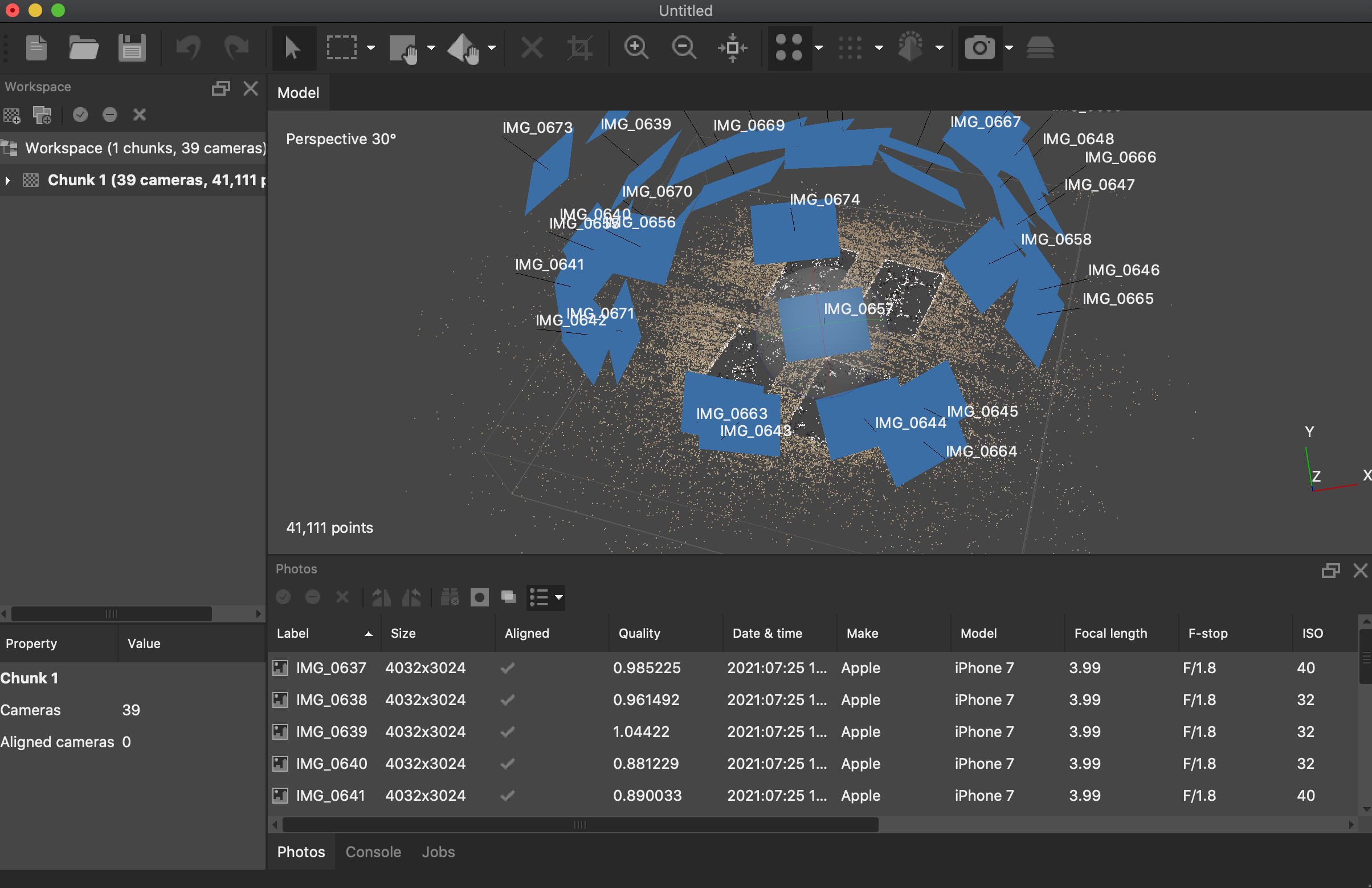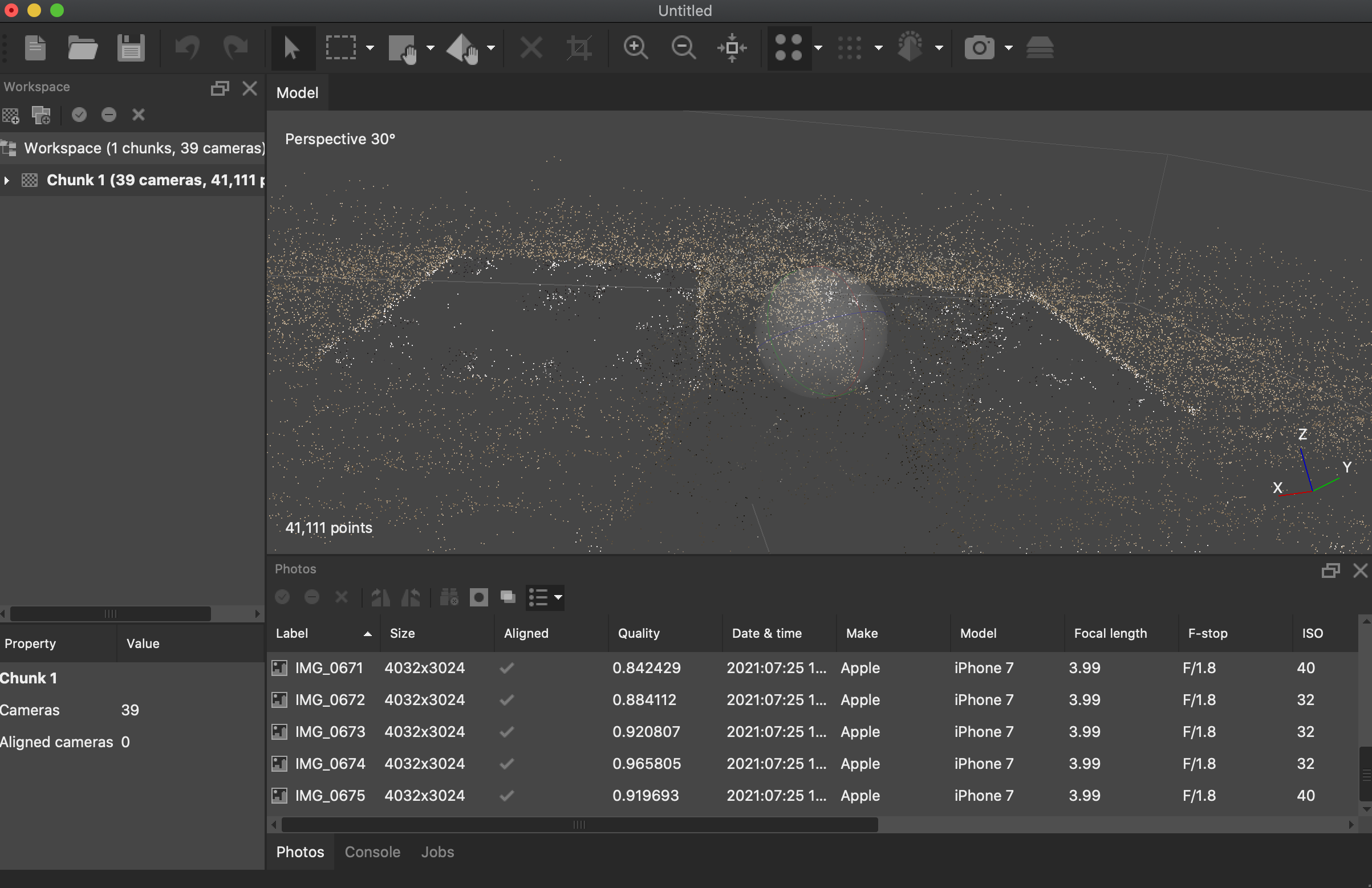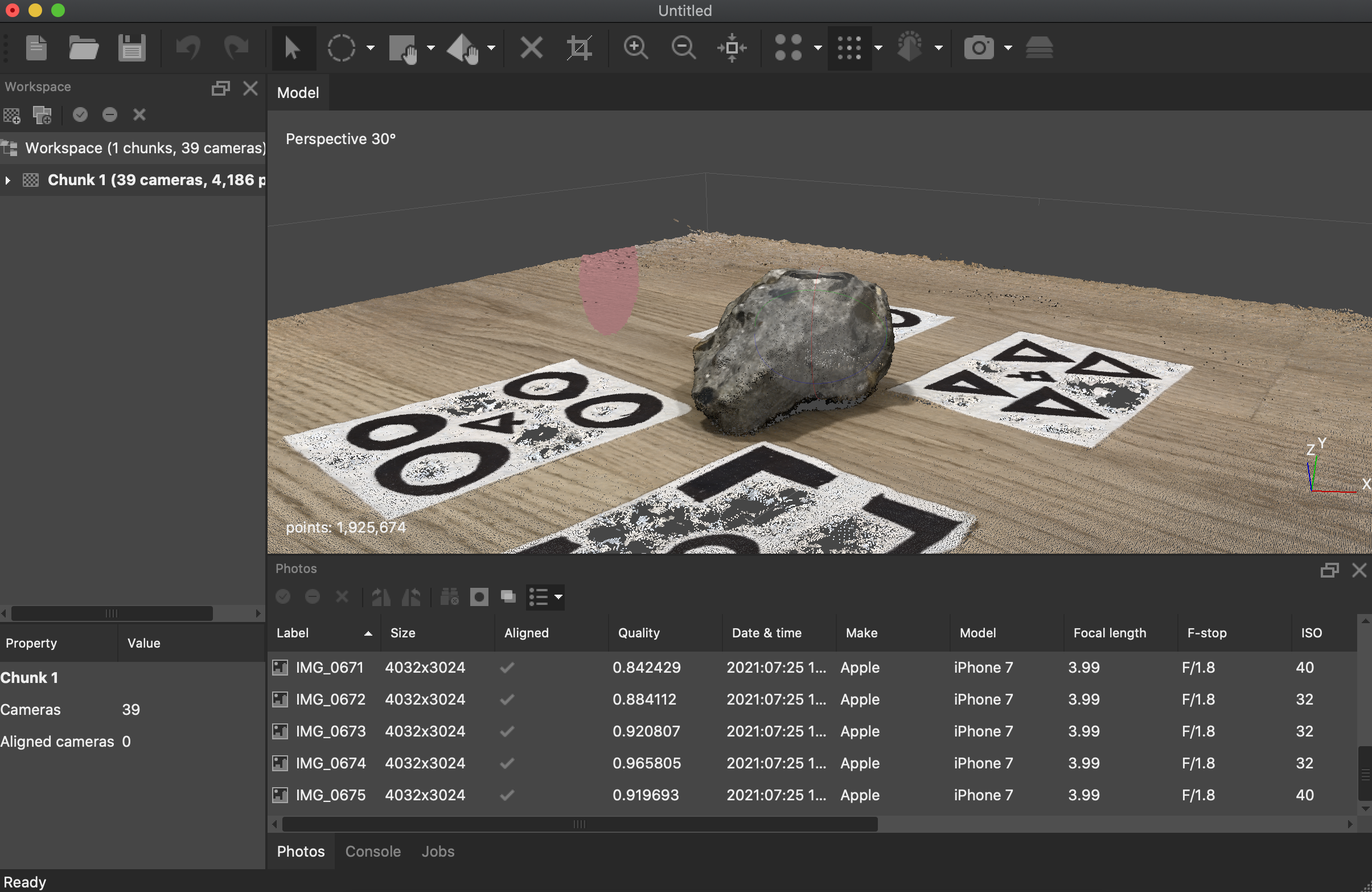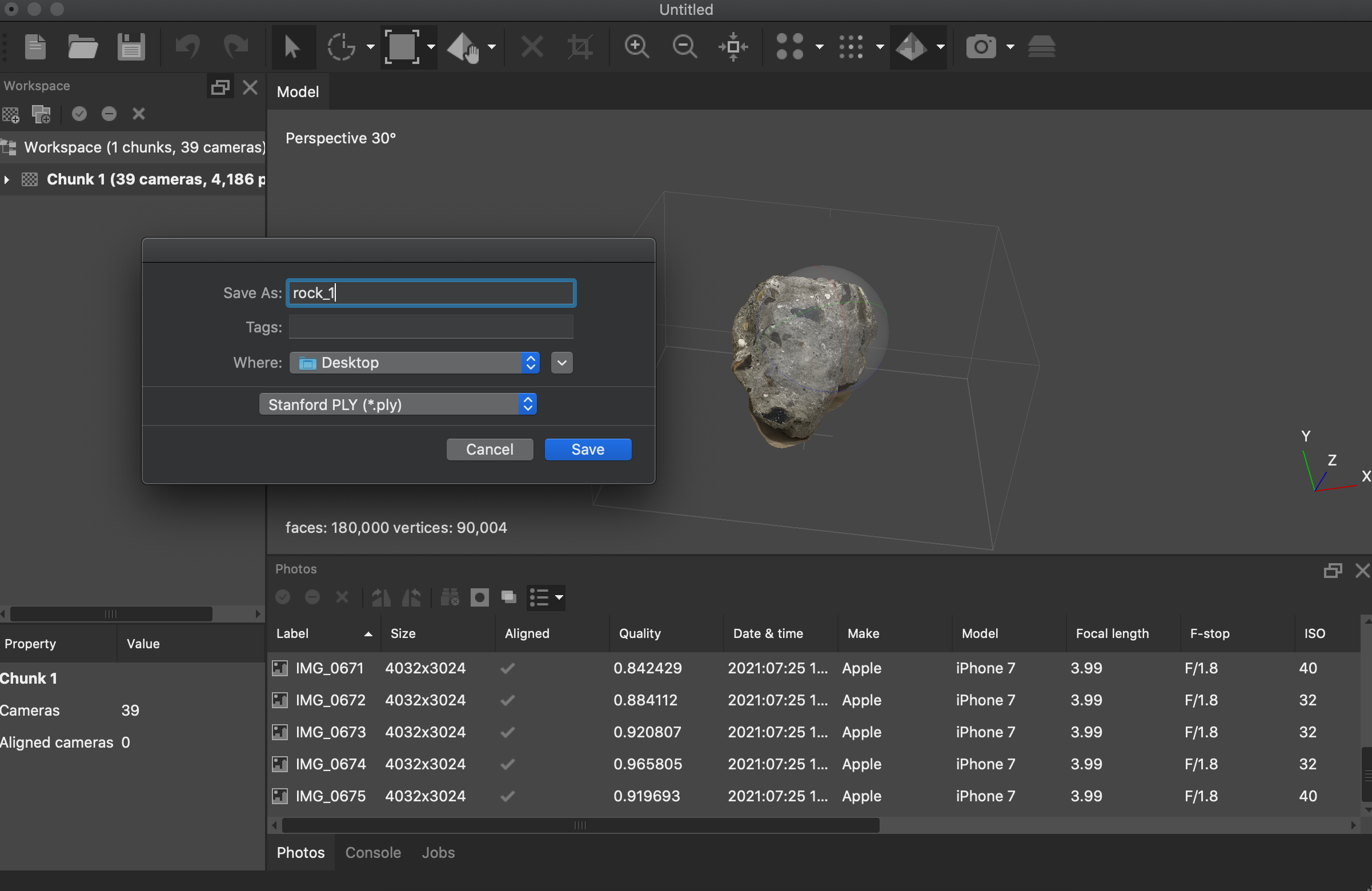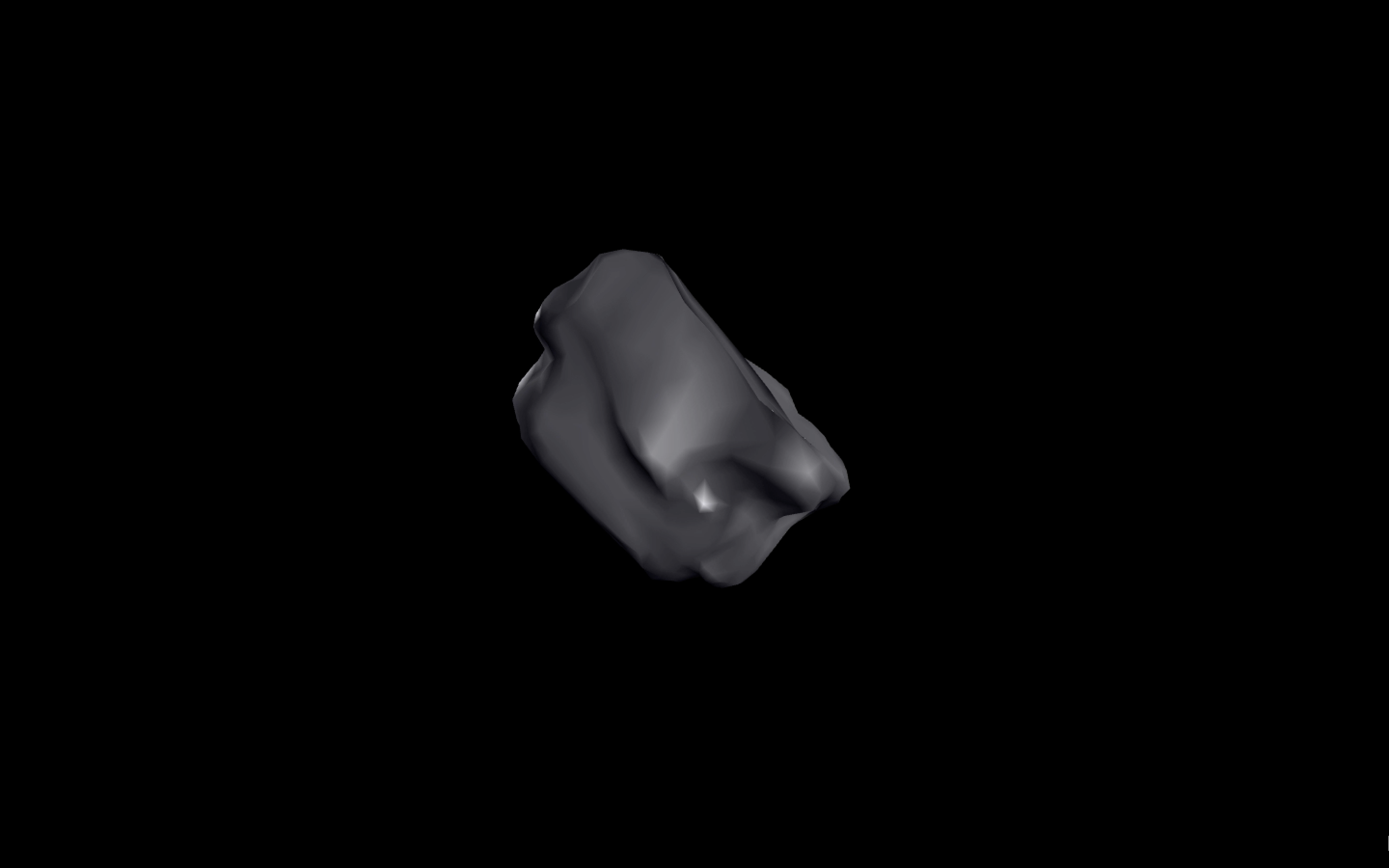Transmaterial Worlding: Using Digital Computation to Unveil Matter’s Animacy.
I apply a recursive algorithm to a digital rock to present a particular opening through which we world its thingness as vitality, in turn shifting the way the artefact worlds us into reframing the material entanglement which we are part of as consisting of a complex intra-becoming system of animacies. This is achieved by programming computational emergence into a digital object mesh which is indexical to an actual physical rock.
Produced by: Pablo De Miguel
The presentation of a research computational artefact alongside this piece of writing creates the assumption that I wish to challenge: that the thingness which emerges from materiality (both analogue and digital) is an inert object which we as subjects perceive in an environment. This assumption makes us inter-relate to the thing; that is to say, we presuppose a distinguishability between ourselves and the digital object which is further entrenched in a precedence of the self over the other. This research work aims to subvert this understanding of an artefact by drawing on Transmaterial Worlding (particularly, Vital Materialism) and Compositional Theory, which rely on the notion of worlding as a “particular blending of the material and the semiotic that removes the boundaries between subject and environment” (Hunter, V. & Palmer, H. 2018). Transmaterial Worlding brings attention to the fact that, although we inhabit a relational existence conceived of as fabricated through human communication, we also “live in layers and entanglements of different types of materiality” (Simon, G. & Salter, L. 2019). Compositional Theory focuses on this material entanglement to explain how it is not the mind that creates a singularity (a thing) out of the rhythm that constitutes experience, but that the collection of elements that come together as a thing brings "matter and mind into a making: a worlding” (Stewart, K. 2014). If we consider both together, we see that mind and matter world each other: the relation becomes intra as opposed to inter-active. This opens the way to understand worlding from a Vital Materialist perspective which attributes animacy to other clusters of matter. We world things and things world us into an intra-becoming. Neither self nor thing takes precedence. This research work examines this theoretical foundation by translating the thingness arising from ‘physical’ materiality to digital materiality by way of computation. Its aim is to use a recursive algorithm to unveil the vitalism inherent in matter to present the different intra-becoming forms of animacies in the particular worlding that arises.
First, let’s unpack further what an artefact is. Ordinarily, the definition of ‘thing’ is “an inanimate object distinguished from a living being” (Merriam-Webster. (n.d.). Thing.). What distinguishes a thing from an artefact is that the latter is a thing that shows “human workmanship or modification as distinguished from a natural object” (Merriam-Webster. (n.d.). Artefact.). That is, an artefact is a thing, but a thing is not always an artefact. However, in the context of this essay both terms are used interchangeably because both definitions and the resulting distinction rely on conceiving a ‘thing’ as having an inter-relational singularity (a representation), an interpretation that the essay rejects from the start. Instead of conceiving an object as a representation perceived by a subject in an environment, I turn to Compositional Theory to define a thing as a “line of action and mood etched across the sensations, vibrations, movements and intensities that comprise both experience and states of matter” (Stewart, K. 2013). It is a something that reaches a point of expressivity. In the original Heideggerian sense, this expressivity comes about as a point of contact between the self and the world. A thing is a nearing into something that feels like something: to thing is to world (Grosz, E. 2001). But what happens if, instead, we consider that the attunement to the ways in which an assemblage of elements come to hang together as a thing is what creates both the sense of interiority and the world, what pulls matter and mind together into a making: a worlding?
Implicit in this latter phenomenological interpretation is a New Materialist perspective as opposed to a Heideggerian one: the pulling of matter and mind together into a worlding postulates that the world is not anthropocentric - we not only story things; things also story us (Rosiek, J. & Synder, J. 2018). And both are and act because of and in relation to each other. This point of view de-centres humans’ position in worlding to imbue things with a life of their own, attributing the notion of animacy to what we would customarily consider dead matter (Braidotti, R. 2019). Yet, again, this vitalism is not to be confused with Heidegger’s take on animacy. In his view, the basis for the animacy of things lies in engaging with “a thing not quite named and yet singular which produces an opening through which thought becomes a gathering of a world in the presence of a thing” (Heidegger, M. 1971). This ‘my-world’ approach betrays an anthropocentric outlook which undermines Heidegger’s own take on erasing the distinguishability between subject and environment by implying that ultimately it is the self that worlds matter. The intra-becoming is more accurately understood if we do not give precedence to self, but instead see it as one locus of agency within a myriad of other dynamic material configurations. Consequently, we arrive at Bennet’s notion of Vital Materialism, where vibrant matter constitutes us and everything around us, revealing an “interconnectedness between humans and non-humans that reframes life and death not as species specific but as grounded in complex systems of animacies” (Bennet, J. 2010). This multiplicity reformulates social construction to include human and non-human participants that world into a mutual intra-becoming. In doing so, we legitimise a post-human worlding that becomes the preferred theoretical foundation against which to explore the different intra-becoming forms of animacies present in the particular worlding that arises when we meet the digital computational artefact.
So, what advantage does the computation inherent in digital materiality have over other forms of materiality in revealing the different intra-becoming forms of animacies? In this research project, computation poses the advantage to allow us to apprehend the emergence and thus vitality inherent in thingness by bringing it to a human timeframe. To show what I mean by this, I make the digital computational object indexical to another form of materiality which Simon & Salter reference to explain the idea of Vital Materiality: a rock (Simon, G. & Salter, L. 2019). We story rock as a dead thing. Why? Because it is motionless, a clump of stillness in time. We characterise rock as we perceive it with our eyes. As soon as we step away from this inter-relational worlding, we understand that rock has a parallel time world, and within it as much vitality as us. Rock is a different manifestation of the same vibrant matter that constitutes humans. Both it and us are frozen in our own timeframe. How can computation suggest rock’s hidden animacy? By accounting for a recursive algorithm that, through a set of simple local rules, displays complex behaviour akin to the emergent processes found in nature. We no longer world the thingness of the rock as inert matter, but as a self-generative becoming that more closely represents the vital materiality (animacy) that supports it and in turn worlds us.
I take a rock and do a photogrammetry scanning of it to translate its thingness from a physical to a digital material entanglement. I use the software Agisoft Metashape, which reconstructs a 3D object by detecting shared visual landmarks from a set of 2D images. From this, it creates a dense point cloud of the object. Surprisingly, the initial point cloud reconstruction of the rock is blended with the physical environment that the latter was photographed in, stripping the rock’s thingness away and bringing attention to the material entanglement from a Vital Materialist perspective it is indistinct from. I make a mesh of the dense point cloud of the rock and export it as a .ply file to Blender, where I strip it from its texture. Simultaneously, I modify Andy Lomas’ application “ParticleSystem4” in openFrameworks to come up with a program that can import a .ply file and apply to it a recursive algorithm displaying emergent behaviour. The program consists of the class ‘Molecule’ that sets the properties of a vertex in space alongside the x, y and z axis, and the class ‘MoleculeNetwork’ that makes a mesh out of the individual molecules. By making many instances of the molecule and putting them together, MoleculeNetwork displays complexity: the interaction of simple local rules results in emergent behaviour that has not been defined by a higher instruction. I import the rock .ply file from Blender and apply to it this recursive algorithm. The result? A set of unembodied computational information that when rendered in the physical environment of the screen produces a visual becoming reminiscent of the worlding that occurs upon our encounter with the original rock. However, the recursive algorithm imbues the rock’s thingness with emergent movement which brings the perceived inertness of matter into animacy, suggesting to a human timeframe the vitalism inherent in all material entanglement.
Dense point cloud of the rock in Metashape
Triangulated mesh of the rock in Blender
In conclusion, I apply a recursive algorithm to a digital rock to present a particular opening through which we world its thingness as vitality, in turn shifting the way the artefact worlds us into reframing the material entanglement which we are part of as consisting of a complex intra-becoming system of animacies. This is achieved by programming computational emergence into a digital object mesh which is indexical to an actual physical rock. Thus, the research artefact challenges the original Heideggerian notion of worlding, where the self worlds things, to align with Vital Materialism by bringing attention to matter’s vitality which ascribes varying degrees of animacy to different material entanglements. The research project arrives at this Vital Materialist view via Transmaterial Worlding and Compositional Theory: the former introduces the notion of world (including self) as being comprised of different material compositions while the latter displaces the self in the hierarchy of worlding to emphasize that both self and thing world each other into an intra-becoming. Ultimately, the research artefact challenges the customary assumption that the thingness which emerges from materiality (both analogue and digital) is an inert object which we as subjects perceive in an environment. Instead, it invokes through computation a post-human transmaterial worlding.
Bibliography
Bennet, Jane. (2010). Vibrant Matter: A Political Ecology of Things. Duke University Press.
Braidotti, Rosi (2019). A Theoretical Framework for the Critical Posthumanities. Theory, Culture and Society. 36, 6, 31-61. https://doi.org/10.1177/0263276418771486
Grosz , Elisabeth.( 2001 ) The Thing in Architecture from the Outside: Essays on Virtual and Real Space. Cambridge, MA: MIT Press.
Heidegger, Martin. (1971). The Thing in Poetry, Language, Thought. NY: Harper & Row.
Hunter, Vicky & Palmer, Helen. (2018). Worlding. New Materialism. Retrieved July 21, 2021, from https://newmaterialism.eu/almanac/w/worlding.html
Merriam-Webster. (n.d.). Thing. In Merriam-Webster.com dictionary. Retrieved July 17, 2021, from https://www.merriam-webster.com/dictionary/thing
Merriam-Webster. (n.d.). Artifact. In Merriam-Webster.com dictionary. Retrieved July 17, 2021, from https://www.merriam-webster.com/dictionary/artifact
Rosiek, Jerry & Synder, Jimmy. (2018). Narrative Inquiry and New Materialism: Stories as (Not Necessarily Benign) Agents. Qualitative Inquiry. 26. 107780041878432. 10.1177/1077800418784326.
Simon, Gail & Salter, Leah. (2019). Transmaterial Worlding. Beyond Human Systems. Murmurations: Journal of Transformative Systemic Practice, 2(2), 1-17. https://doi.org/10.28963/2.2.2
Stewart, Kathleen. (2013). Studying Unformed Objects: The Provocation of a Compositional Mode. Member Voices, Fieldsights. Retrieved July 23, 2021, from https://culanth.org/fieldsights/studying-unformed-objects-the-provocation-of-a-compositional-mode
Stewart, Kathleen. (2014). Tactile Compositions. Routledge.

































































